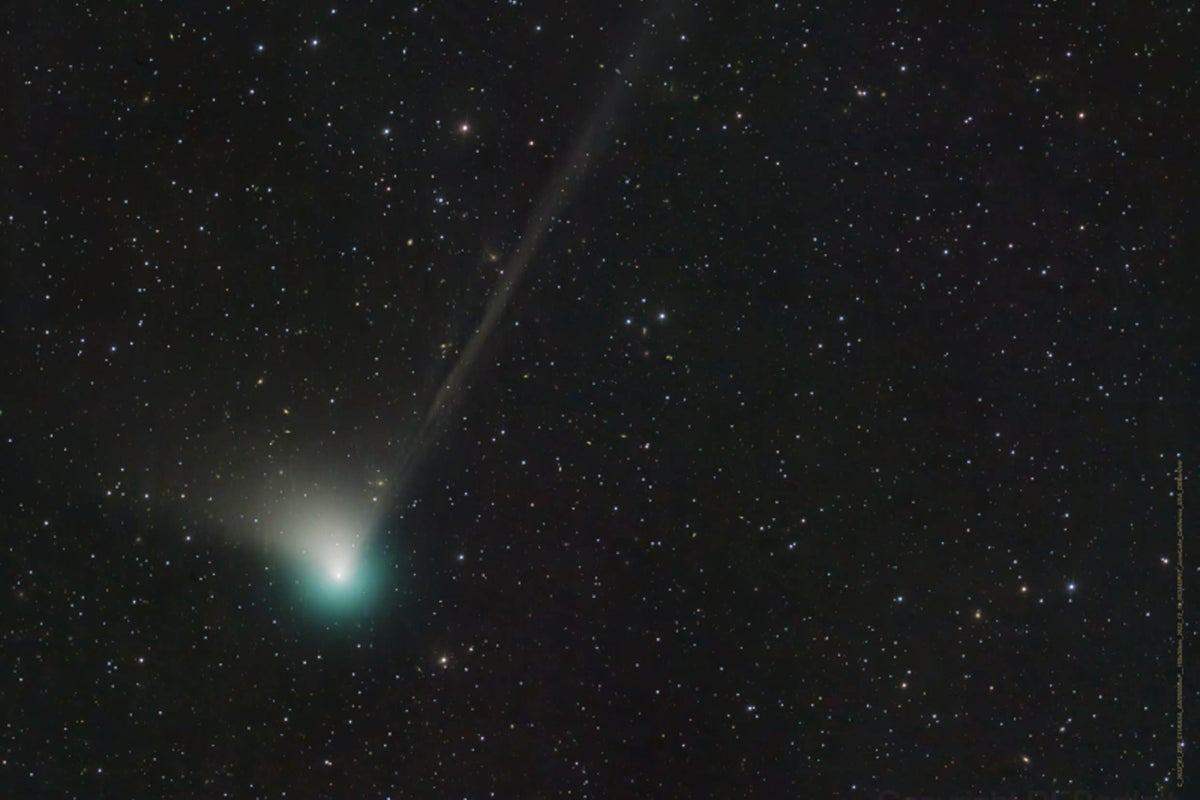Green comet making its closest approach to Earth in 50,000 years

A rare green comet, that has not been seen for 50,000 years, is about to make its closest pass by Earth, becoming visible in a once-in-a-lifetime opportunity.
Called C/2022 E3 (ZTF), this celestial object hails from the Oort cloud at the outermost edge of the solar system.
Its green glow is a result of ultraviolet radiation from the sun lighting up the gases surrounding the comet’s surface.
The icy ball orbits the sun once every 50,000 years, which means the last time it went past the planet was during the Stone Age – when Neanderthals roamed the Earth.
As the comet approaches Earth (it’s still 42 million km away, so no chance of a collision) it appears to move more quickly across the sky on a night-by-night basis
Professor Don Pollacco, University of Warwick
It is due to pass closest to the planet – still some 42 million kilometres away – on Wednesday night, into the early hours of Thursday and in a very dark sky will appear as a faint smudge to those looking for it with the naked eye.
However, even if the moon is too bright for stargazers to spot the comet on Wednesday night, they might be able to catch a glimpse of it a week later when it passes Mars.
Professor Don Pollacco, from the department of physics at the University of Warwick, told the PA news agency: “Comet C/2022 E3 passes closest to Earth tonight, on 1 February.
“It has been christened the “Green Comet” as pictures show the head of the Comet to have a striking colour.
“We understand this as due to light emitted from carbon molecules ejected from the nucleus due to the increase in heat etc during its closest approach to the sun, which happened around 12 January.
“Some comets approach the sun much closer and are completely evaporated by the intense radiation.”
He added: “As the comet approaches Earth (it’s still 42 million km away, so no chance of a collision) it appears to move more quickly across the sky on a night-by-night basis.
“Tonight the comet is about halfway between the pole star and the bright star Capella, overhead about 11pm.
“However, the waxing moon will make the Comet much harder to spot. To see it you’ll need a clear sky, binoculars and a bit of luck.
“Alternately, if you wait a few days to around 10 February, the moon will be less bright and the comet will be clearer to see in the southern part of the sky, passing Mars.”
The Greenwich Royal Observatory says that from the northern hemisphere, the comet is already visible in the night sky using a telescope or some binoculars.
It adds: “Comet C/2022 E3 (ZTF) will be closest to Earth on February 1. This will also be the moment the comet appears at its brightest, and currently it is expected to reach a brightness magnitude of +6. That would mean it would be visible to the naked eye.
“It’s worth noting, however, that comets can be unpredictable, and it’s hard to say with accuracy how bright the comet will be or what it will look like ahead of time.
“The comet looks like a fuzzy green ball or smudge in the sky. This green glow is a result of UV radiation from the sun lighting up the gases streaming off of the comet’s surface.”
Advising on where the comet can be seen in the night sky, the Observatory says: “When it passes near Earth in February, the green comet will be in the constellation of Camelopardalis.
“After its closest approach, the green comet will move through Auriga and end up in Taurus mid-February.
“The comet will dim over the month as it moves away from us, and the time that it will be up in the sky during the night will get shorter and shorter.”
For all the latest Science News Click Here
For the latest news and updates, follow us on Google News.

